Introduction
Black eyed Susan is a genus of about 18 species of annual and perennial plants in the family Asteraceae. The flowers are usually yellow to orange, but can be red, pink, or purple.
Black-eyed Susans are a classic, easy-to-grow flower that’s a wonderful addition to any garden. In the spring, the bright yellow, daisy-like flowers brighten up the landscape. In the fall, the seed heads remain as a welcome reminder of the previous summer. But do you know what type of black-eyed Susan flowers you have? There are several varieties and some bloom at different times. Let’s take a look at some of the most common types of black-eyed Susan flowers and their characteristics.
Cherokee Sunset Black-Eyed Susan

Cherokee Sunset Black-Eyed Susan (Rudbeckia) casts an autumn glow across the garden with large double and semi-double blooms burning in radiant yellow, orange, and copper hues. A dark mahogany center and chocolate brown eye accent the warm tones. Sturdy, upright stems and bright green foliage resist deer and rabbit browsing.
Rudbeckia Triloba Black Eyed Susan
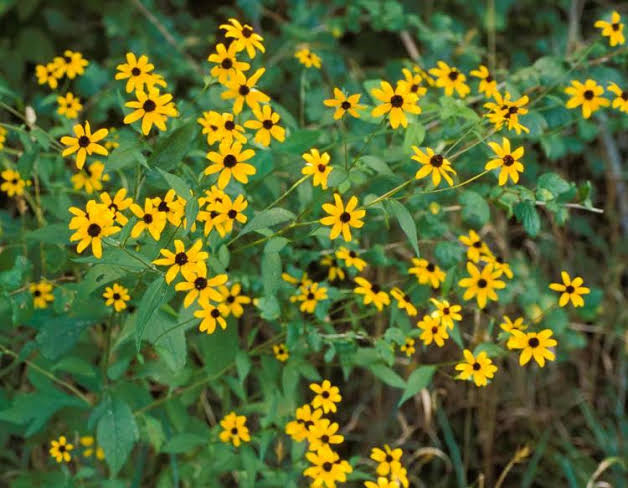
The Rudbeckia Triloba Black Eyed Susan is a unique variety of black eyed Susan. It has three petals instead of the usual five, and the petals are a deep burgundy color. This variety is perfect for adding some color to your garden, and it blooms from late summer to early fall. If you’re looking for something a little different, the Rudbeckia Triloba Black Eyed Susan is definitely worth considering!
Oriental Black Eyed Susan
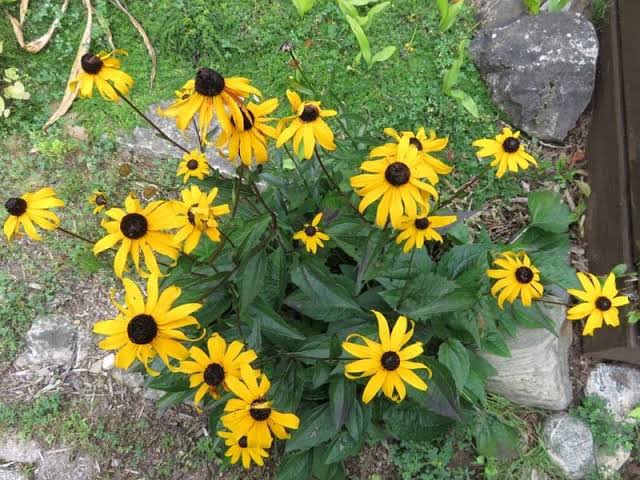
Oriental black eyed Susan is a species of black eyed Susan that is native to Asia. This variety typically has a daisy-like flower head that is orange or yellow in the center and surrounded by dark brown petals. The leaves are also darker than most other black eyed Susan varieties. Oriental black eyed Susan grows best in full sun and prefers moist, well-drained soil.
Also Read: Different Types of Celosia Flowers
Denver Daisy Black-eyed Susan

A Denver Daisy Black-Eyed Susan is a perennial that can be identified by its yellow ray flowers and black center disk. It blooms from late spring to early fall and can be found in open meadows, prairies, and along roadsides.The Denver Daisy gets its name from the city of Denver, where it was first discovered. The Black-Eyed Susan part of its name comes from the black center of its flowers.
Indian Summer Black-eyed Susan

Indian Summer Black-Eyed Susan (ISBES) is a perennial wildflower that blooms from late summer into fall. It typically grows in moist, open woods and thickets, and can reach a height of 3 to 4 feet. The large, daisy-like flowers are a deep orange-brown, with a black center. They bloom from late summer into fall, and can be seen dotting the landscape along roadsides and in meadows. Indian Summer Black-Eyed Susan is a tough plant that can handle heat and drought, making it a good choice for gardens in warm climates.
Goldsturm Black-Eyed Susan

Goldsturm Black-Eyed Susan is a perennial that is known for its daisy-like flowers and deep green leaves. The plant is a hardy one, thriving in a variety of climates and growing up to 3 feet tall. Goldsturm Black-Eyed Susan is a favorite of gardeners for its easy maintenance—the plant does not require a lot of watering or fertilizing. The flowers are a beautiful golden color and will bloom from late spring to early fall.
Goldsturm Black-Eyed Susan is a hardy plant and can tolerate a wide range of growing conditions. It is drought tolerant and does well in full sun or partial shade. Goldsturm Black-Eyed Susan can be grown in both containers and in the garden.
Also Read: Major Varieties of Cosmos Flowers For Your Garden
Cappuccino Black Eyed Susan

The Cappuccino Black Eyed Susan is a new variety of black eyed Susan that was developed by Dr. John Stahl of North Dakota State University. It is a cross of two flowers: the brown eyed Susan and the swamp thistle. The flower gets its name from the cappuccino-colored center of the flower. The petals are a deep burgundy color with lighter margins. The plant grows to a height of 3-4 feet and blooms from June to September.
Prairie Sun Black Eyed Susan
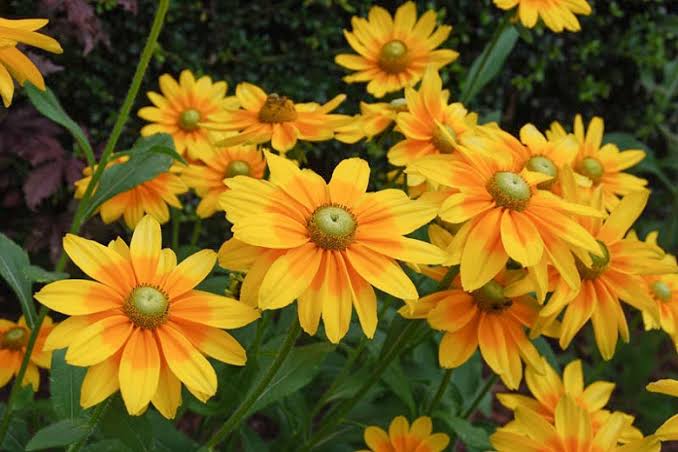
Prairie Sun black eyed susan is easily recognized by its dark brown centers and yellow petals. It is a perennial that blooms from midsummer to fall, making it a popular choice for gardens and wildflower fields.
The bright yellow flowers with a dark brown center are a cheerful addition to any garden and make excellent cut flowers. This tough plant grows in almost any type of soil and can withstand drought, heat and humidity. To grow Prairie Sun black eyed Susan, start with a soil that is well-draining. Plant the seeds in late spring after the last frost, and thin them out so that they are about 12 inches apart.
Marmalade Black Eyed Susan

Marmalade black eyed Susan is a fun and vibrant hybrid that was created to attract attention. With a bright orange flower and a contrasting dark green foliage, it is sure to make a statement in any garden. The best part is that it is easy to care for and can be grown in a variety of settings. Whether you are looking for a perennial for your garden or a cut flower to bring indoors, marmalade black eyed Susan is a great option.
Summerina Orange Black Eyed Susan

Summerina Orange Black Eyed Susan is a new, patented flower bred by Ball Horticultural Company. It is a cross between a black eyed susan and a marigold, and the result is a plant with stunning orange blooms that last all summer long. The flowers are perfect for adding color to any garden, and they make a beautiful addition to any outdoor space.
Also Read: Major Varieties of Marigold Flowers
Little Goldstar Black Eyed Susan
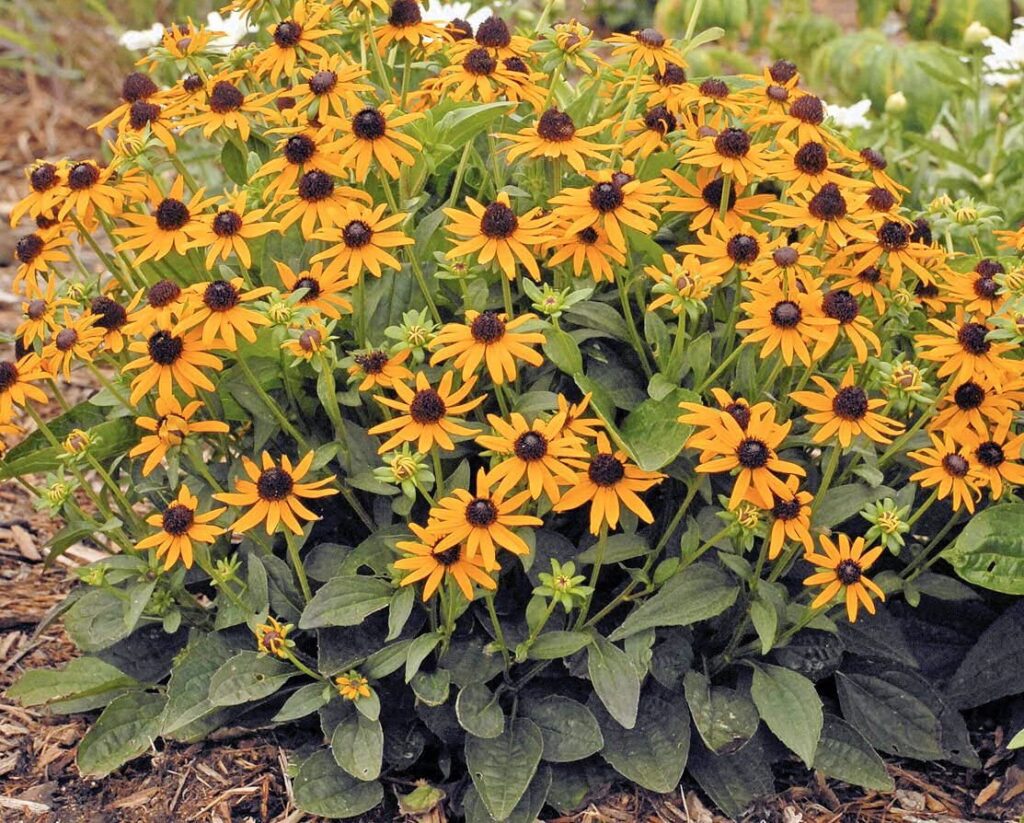
The Little Goldstar black eyed Susan is a perennial flower that can be found in fields, meadows and gardens. The flower gets its name from the black center of its petals, which resemble a star. The golden yellow petals surrounding the black star give the flower its other name, goldstar.
Little goldstar black-eyed Susans blooms in Mid-Spring. These cheerful little flowers can be found cropping up all over the place in the Mid-Spring months. And, with their bright yellow petals and black centers, they’re hard to miss! If you’re looking to add a little bit of color to your garden, these are a great option. They grow quickly and easily, and they’re perfect for adding some brightness to a springtime bouquet.
Becky Mix Black-eyed Susan
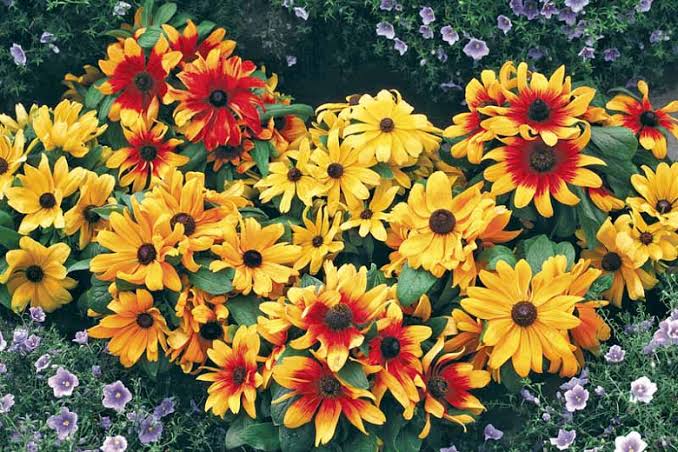
The Becky mix black eyed susan is a perennial flower named after Becky, a Native American woman who was known for her beautiful black eyes. The Becky mix black eyed susan is a mix of several different black-eyed susan species, and it is known for its large, showy blooms.
The ideal growing environment for Becky mix black eyed susans is full sun and well-drained soil. They can tolerate a variety of soil types, but perform best in sandy or sandy loam soils. As long as they have plenty of sunlight and good drainage, they should tolerate most other environmental conditions.
Summerina Yellow Black Eyed Susan
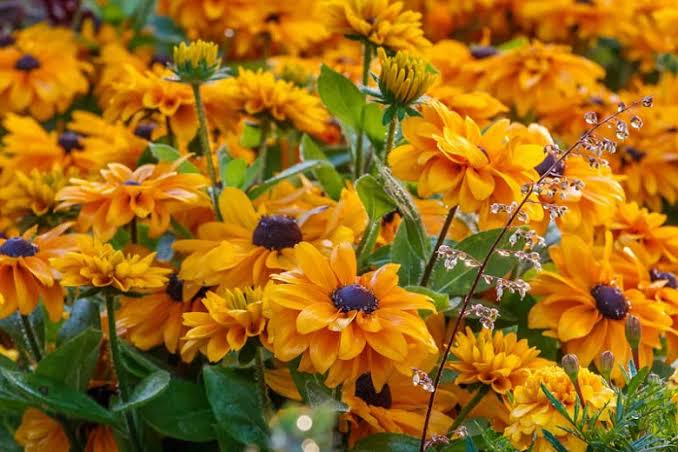
Summerina yellow black eyed Susan is a perennial that can grow up to 3 feet in height. The plant features bright yellow flowers with black eyes which bloom from June to September. The leaves are green and hairy, and the plant produces seeds in the fall. It is a hardy plant that can tolerate drought and other challenging conditions.
Summerina yellow black eyed Susan is a new variety of black eyed Susan that was recently released by the University of Minnesota. Summerina is resistant to powdery mildew, a common disease that affects this type of flower. The yellow variety is especially striking against the traditional purple flowers. If you are looking for a new black eyed Susan to add to your garden, be sure to check out the University of Minnesota’s website for more information.
Also Read: Different Types of Poppies For Your Home
Conclusion
Black eyed Susan is a beautiful wildflower that’s native to North America. It can be found in various habitats, such as meadows, prairies, and open woodlands. The blooms come in shades of yellow, orange, and red, and the flowers are a favorite food source for pollinators.
Black eyed Susan is a versatile flower that can be used in a variety of ways in your garden. For a pop of color, plant them in the front of your garden. They’ll add a cheerful brightness that will light up your day. If you’re looking for something a little more subtle, try using them in the back or side of your garden. They’ll still stand out, but won’t take away from other flowers or plants. Additionally, black eyed Susan can be used in flower arrangements or as borders around your garden. No matter what your garden needs, black eyed Susan is a great choice!
Black-Eyed Susan is an essential part of any summer garden, and if you want them to keep coming back next year, remember that they prefer full sun. Keep the soil moist, but not soggy or dry – this will help your Black Eyed Susan re-bloom well too. Black eyed Susans are a great plant for pollinators to visit as well, so it’s a nice addition to your wildlife area if you’re looking for good native plants.